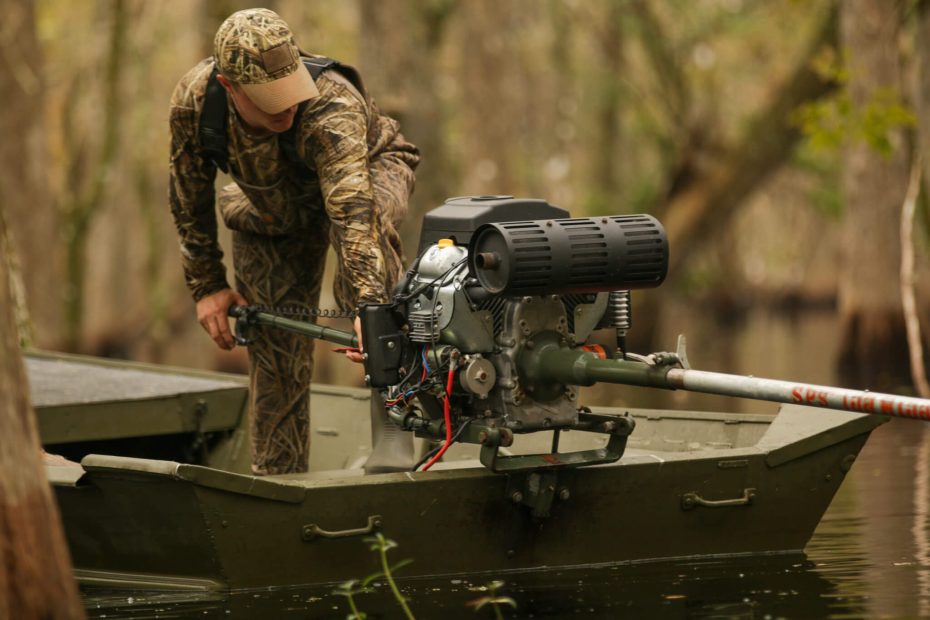If I can think of one piece of equipment that has revolutionized mobility in the North American marsh it has to be the mud/swamp motor. We have come a long way from poling our marsh boats into and out of the marsh. Electric trolling motors were all the rage for years followed by lightweight gas motors with less than 2.5 horsepower. Slow, deliberate, and steady, we guided our boats making headway into rain, wind, and snow and eventually arriving at the honey hole. Many times though, the final leg of the journey required the abandonment of the motor and walking in the boats as the water became shallow. This was required simply because, motors could not operate in shallow water without becoming entwined in marsh grass, corn stalks, and moist soil plants, not to mention mud.
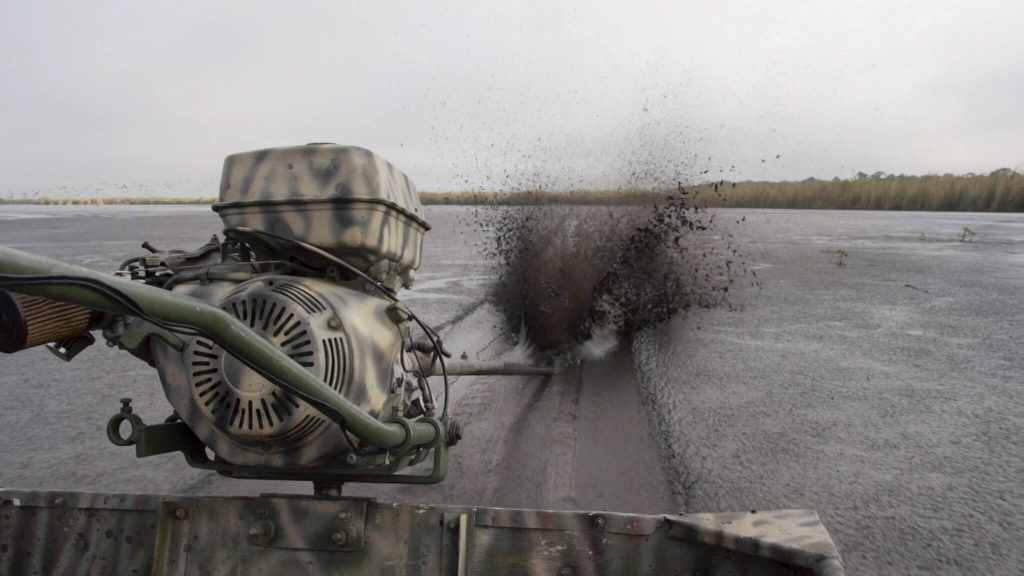
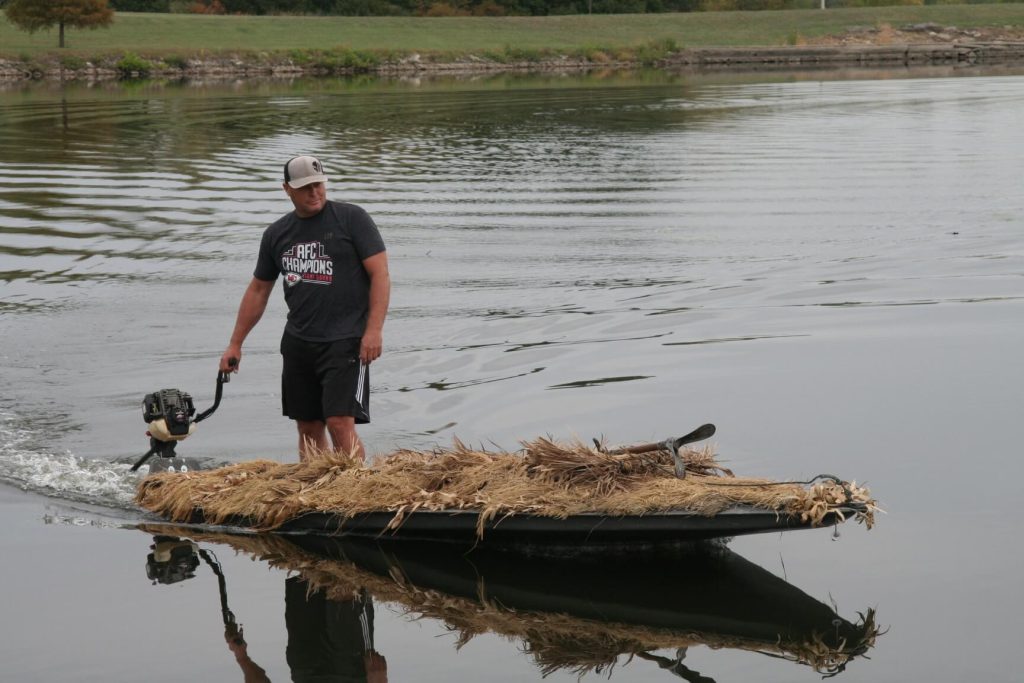
Today, the growth of new shallow-water mud or swamp motors is gaining the attention of wetland hunters. These can be a low 3.5 horsepower to extreme 40+ horsepower propulsion units. Each motor having a particular use, boat size, and transom requirements.
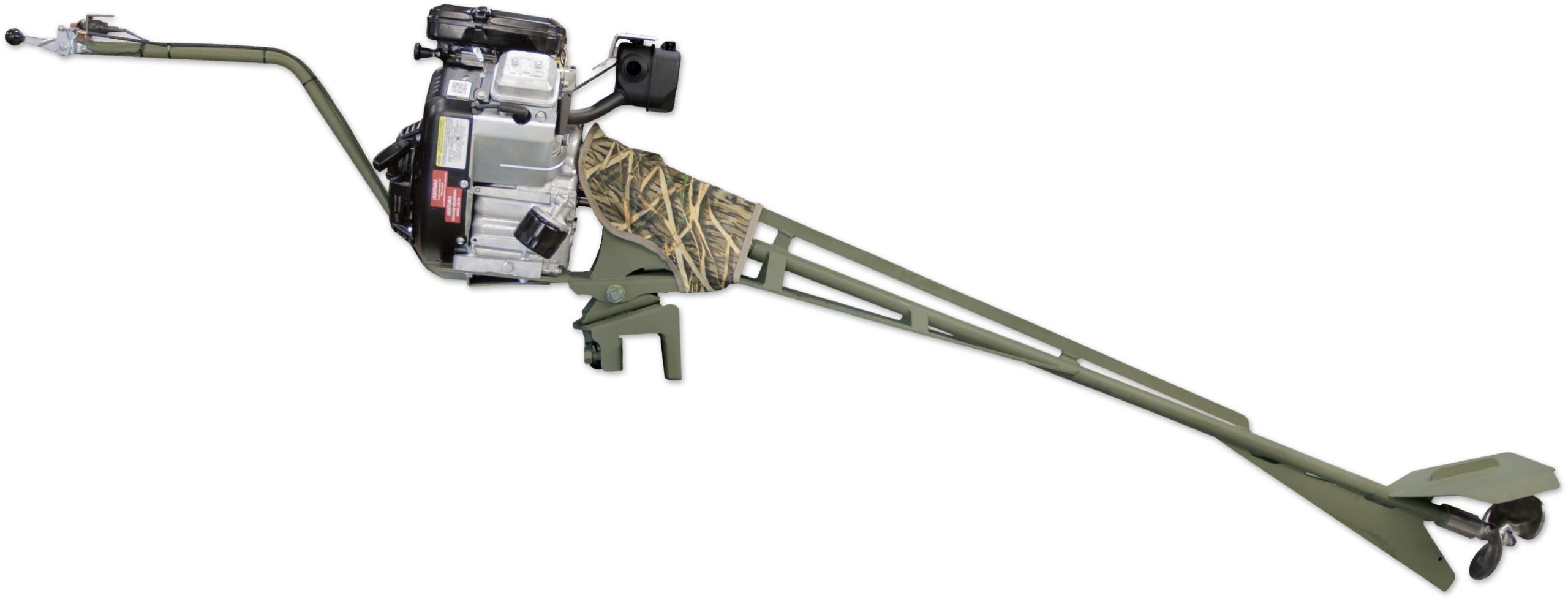
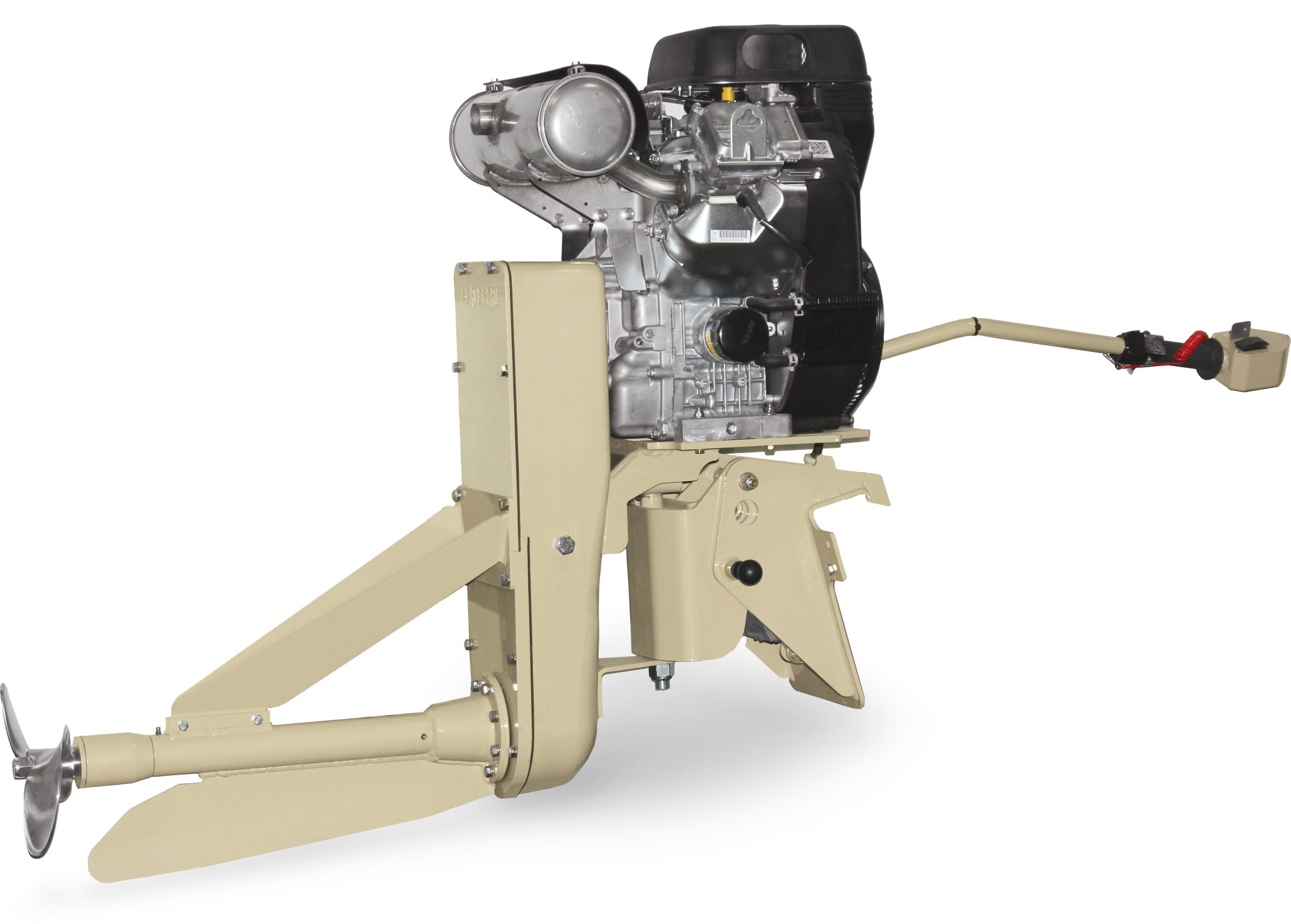
Lets start with the two types: Long tails, and surface drives. The long tail has a history of use mostly in the Pacific Rim where shallow drives are necessary. Designed to be lightweight, easy to steer the boat, and balance on the top of the boat transom, these motors are extremely versatile. While many may be in the higher weight range of just less than 100 pounds, some are more in the 25-pound or less weight range. Consider the weight of a trolling motor and battery at nearly 30 pounds and a 2.5 HP outboard at just about 25 pounds so the lighter long tails are perfect for smaller layouts and Jon-boat designs. Long tail motors allow the operator to lift the prop out of the water to avoid debris but also to lower the tail to bite harder and provide more propulsion.
The surface drive motor is a much more powerful motor with a fixed mount, although some manufacturers offer electric trim, to the boat transom and use a prop operating at just above or below the water surface. These motors are faster, quicker, and can push more weight in bigger boats while providing incredible performance in almost no water.
Both the long tail and surface drives can operate in shallow water or mud. The surface drive is a much heavier motor but offsets that with pure power, while lighter tong tails can be removed or carried. The surface drive motors typically have forward, neutral, and sometimes reverse, while the long tail motors are forward only, which in tight places can cause the need to exit the boat to gain proper direction.
In the lower horsepower long tails, many do not have an electric start. For obvious reasons, the weight alone of the battery makes electric start counter-productive. The surface drives typically do have electric start motors.
There are a few more options and attributes to some of these motors including electric neutral clutches, built-in travel locks, ball-bearing assisted drive shafts, prop designs, and high-tech welding.
I thought I would provide a few companies for you to look at and see the variety and types of mud motors on the market today.
Go-Devil
Go-Devil has over 40 years of experience and prides itself on building products that will last in the harshest environments and in the most remote places. Their customer service is an important attribute as are product testing, design, and passion for quality. Warren Coco started the company in 1977 with inspiration from Vietnamese designs of long-tail boat motors. Today his company employs over 30 people and produces nearly 2000 units a year.

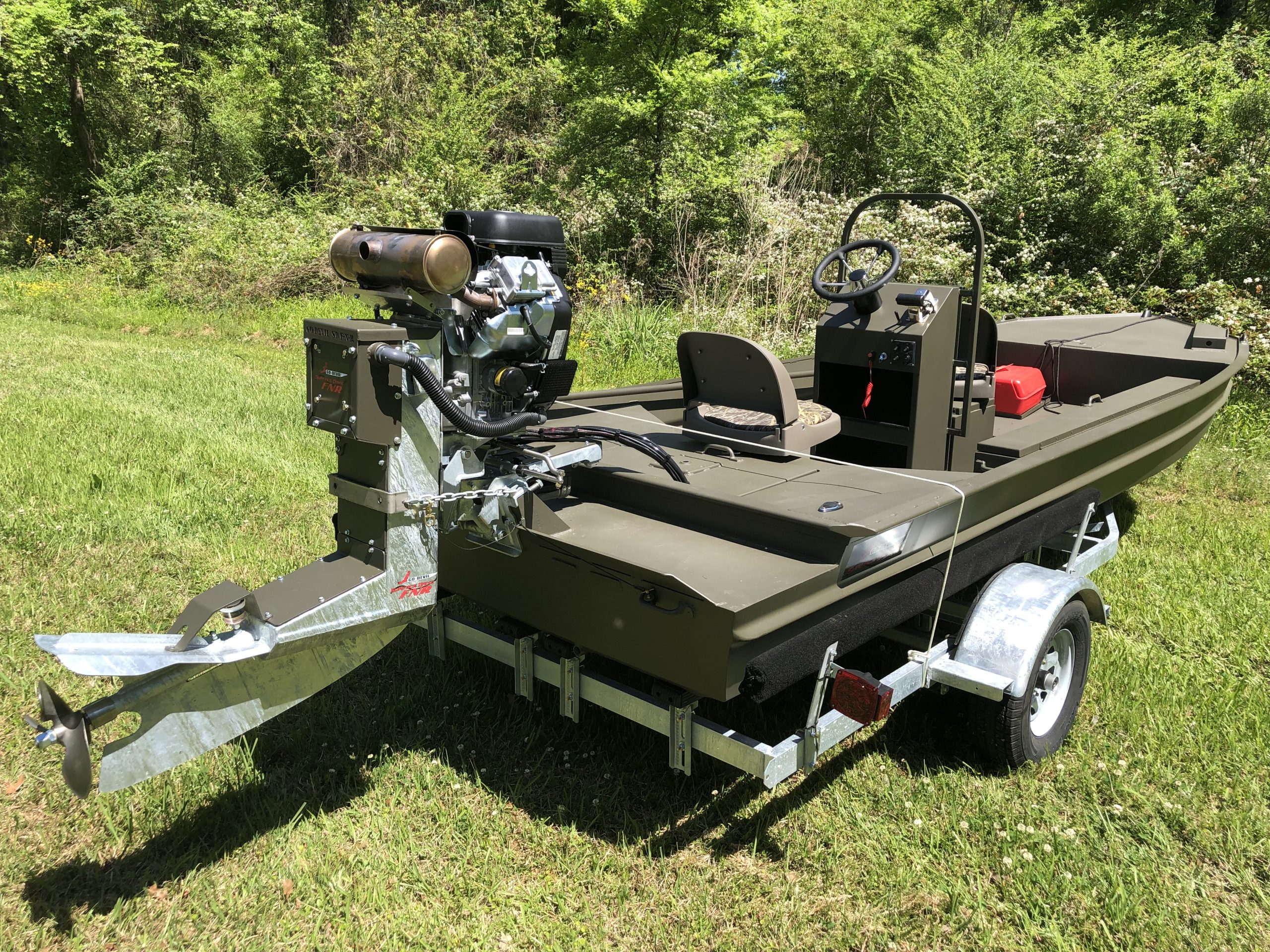
Beaver Tail
Beaver Tail is a diverse company manufacturing much more than just mud motors. Their product line of boats uses a roto-milling process that provides a durable finish. Their mud motor lineup includes both long tail (5 options) and surface motors with three options.

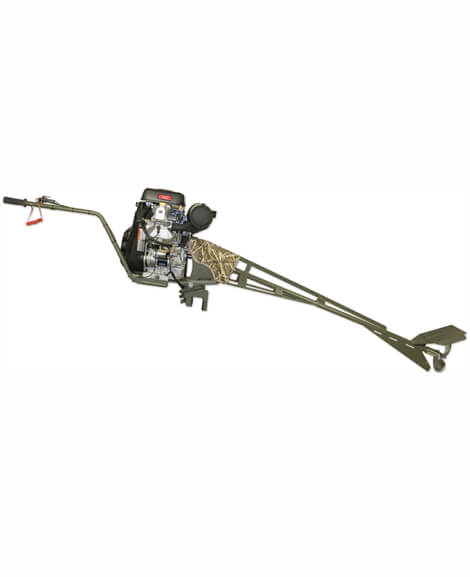
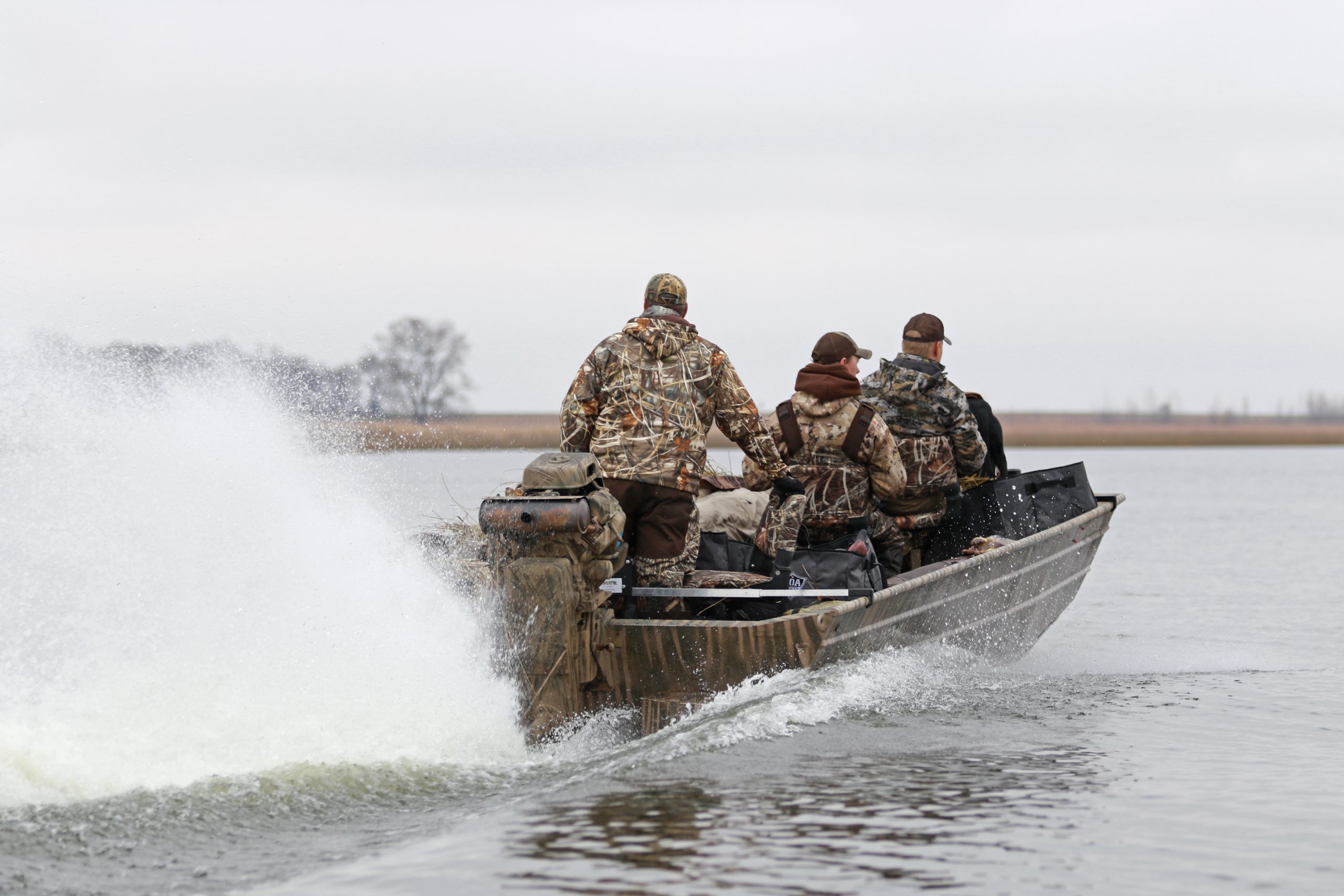
Mud Buddy
Mud Buddy, a Utah company, was formed in 1994 by Glenn Foreman. In twenty-five years they have grown a product line of long tail motors, hyper-drive motors, sport motors, and hyper-drive with reverse motors. Their products range from just under $5000 to just under $12,000. Their products are American-made with American-made components.
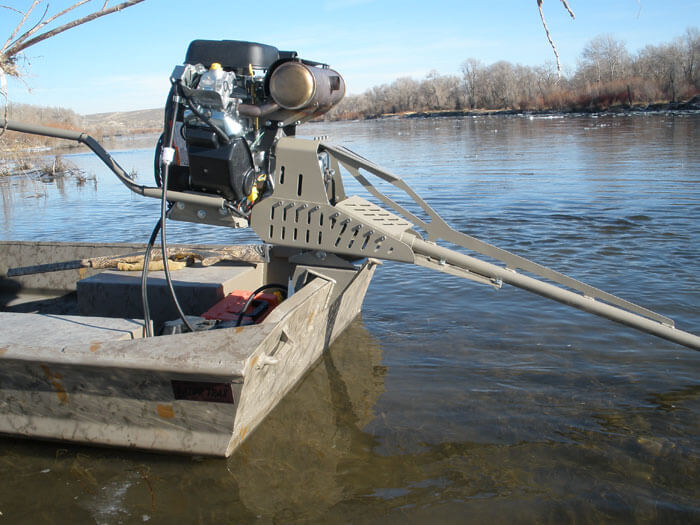
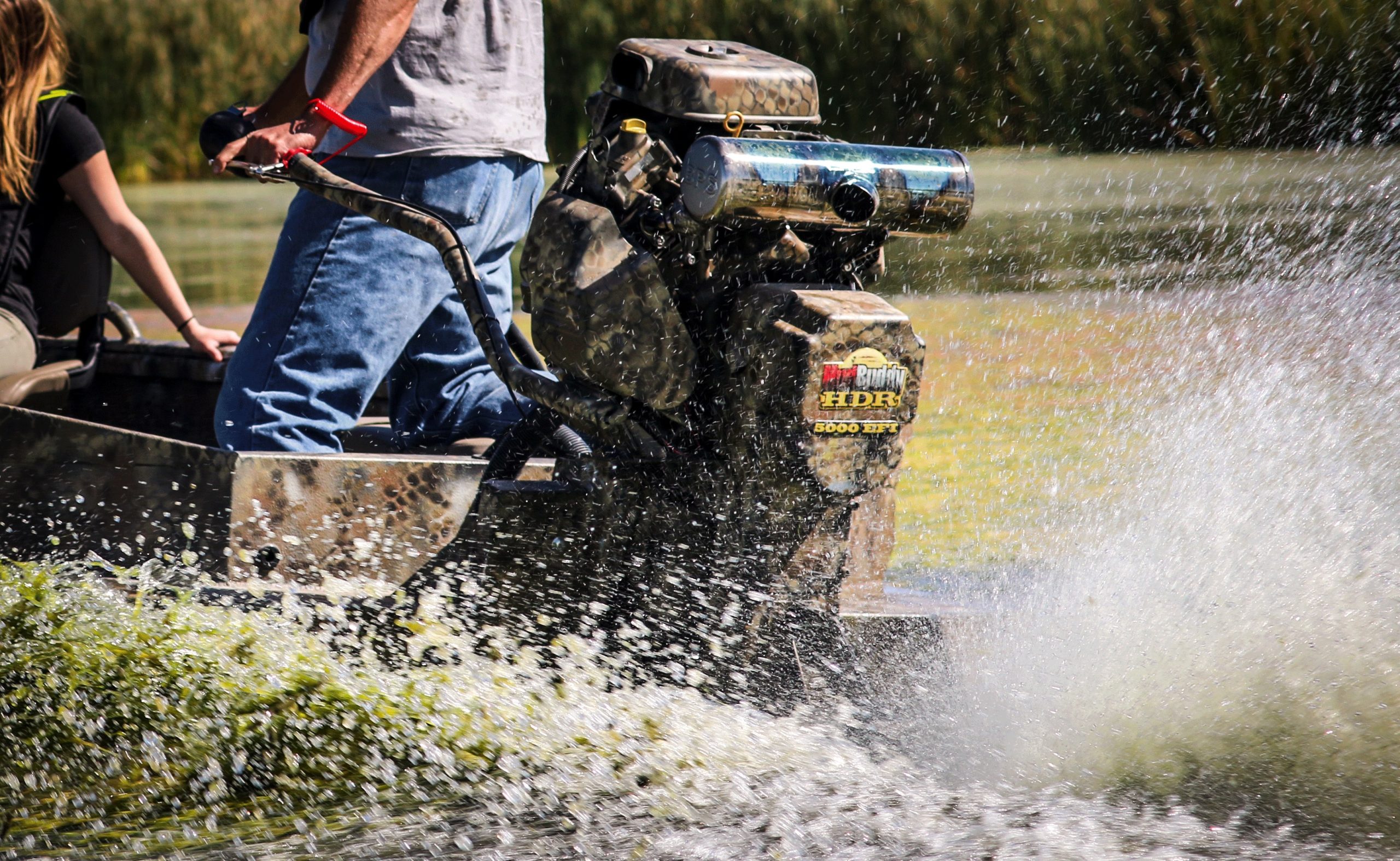
Swamp Runner
John Dobbs has a long history with long-tail motors. Some 25 years ago he began traveling to Thailand and learning the art of long-tail construction that he has molded into a business based on history, performance, value, simplicity, and durability. Swamp Runner is a kit-based business providing selections for a wide variety of motors. Their kits range from low horsepower 2.5-3hp motors to 35-40hp motor kits. They offer both kits and motors for just about any application. Swamp Runner is also the first, and currently the only mud motor brand to complete a full descent of the Yukon River. From Llewellyn Glacier to Emmonak, these men in motorboats traveled the length of the Yukon River in less than 25 days They offer bulletproof bushings and more shaft & prop options than any other mud motor company.
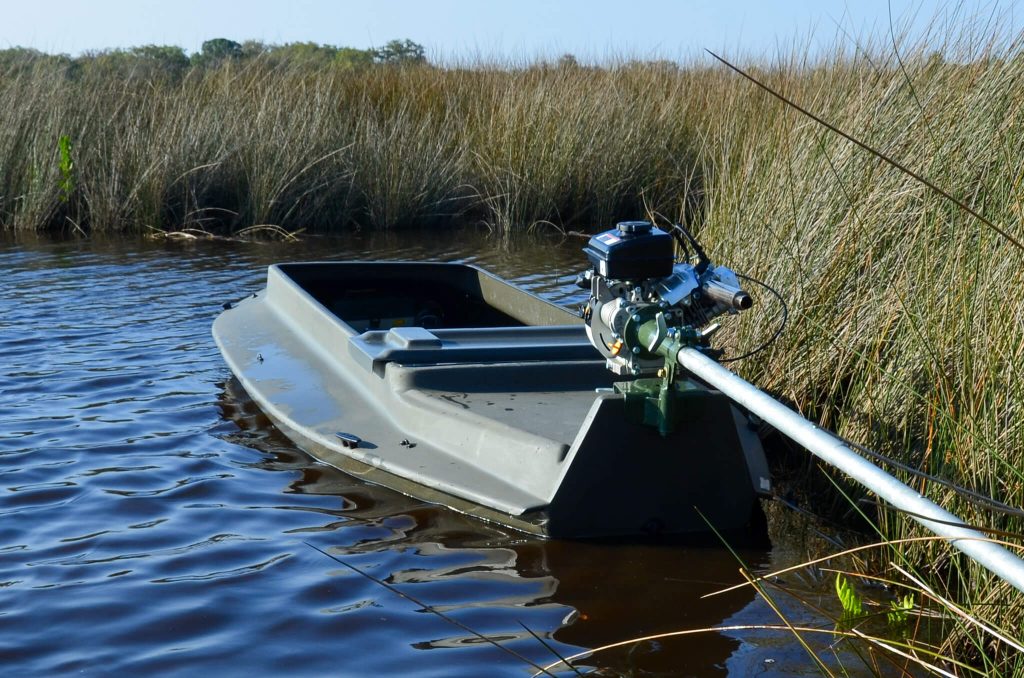
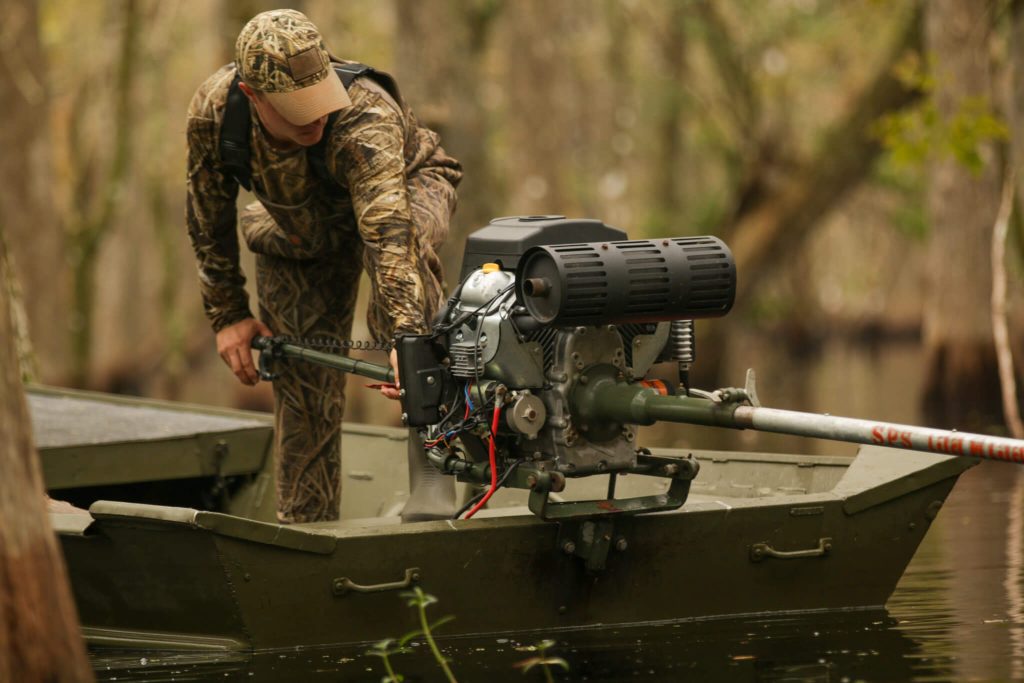
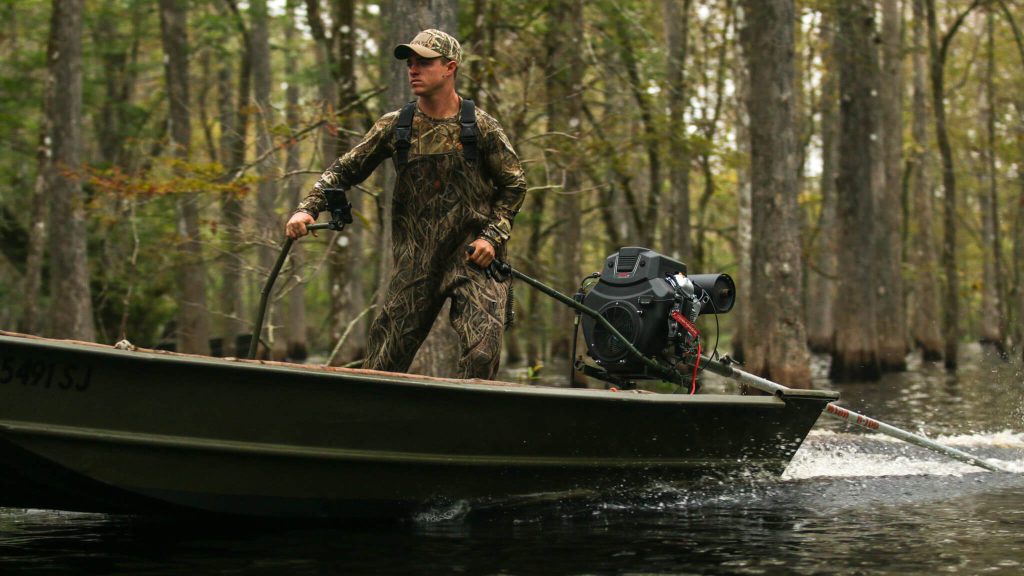
Rickshaw
I am only adding this motor in because I have one. These are long-tail motors no longer on the market, but a few can be bought used here and there. My experience with these motors having traded for two was no parts, no manuals, and no help in any way for rebuilding. Should you find one get in touch with me and I’ll help you through a rebuild. But for this article, the Rickshaw does serve a purpose in establishing early model weights and performance.
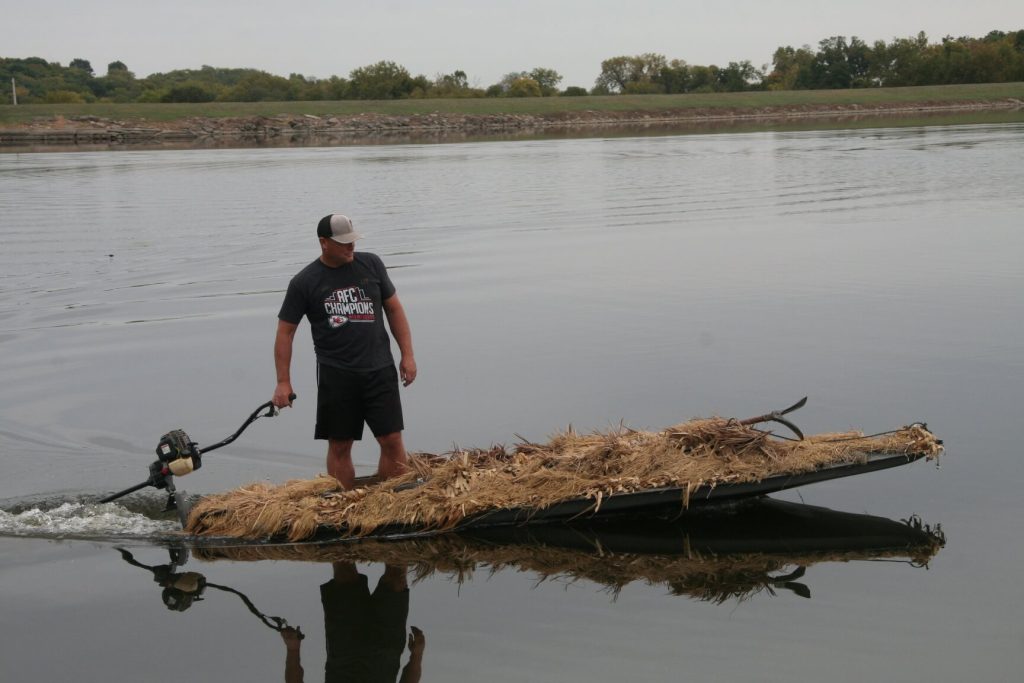
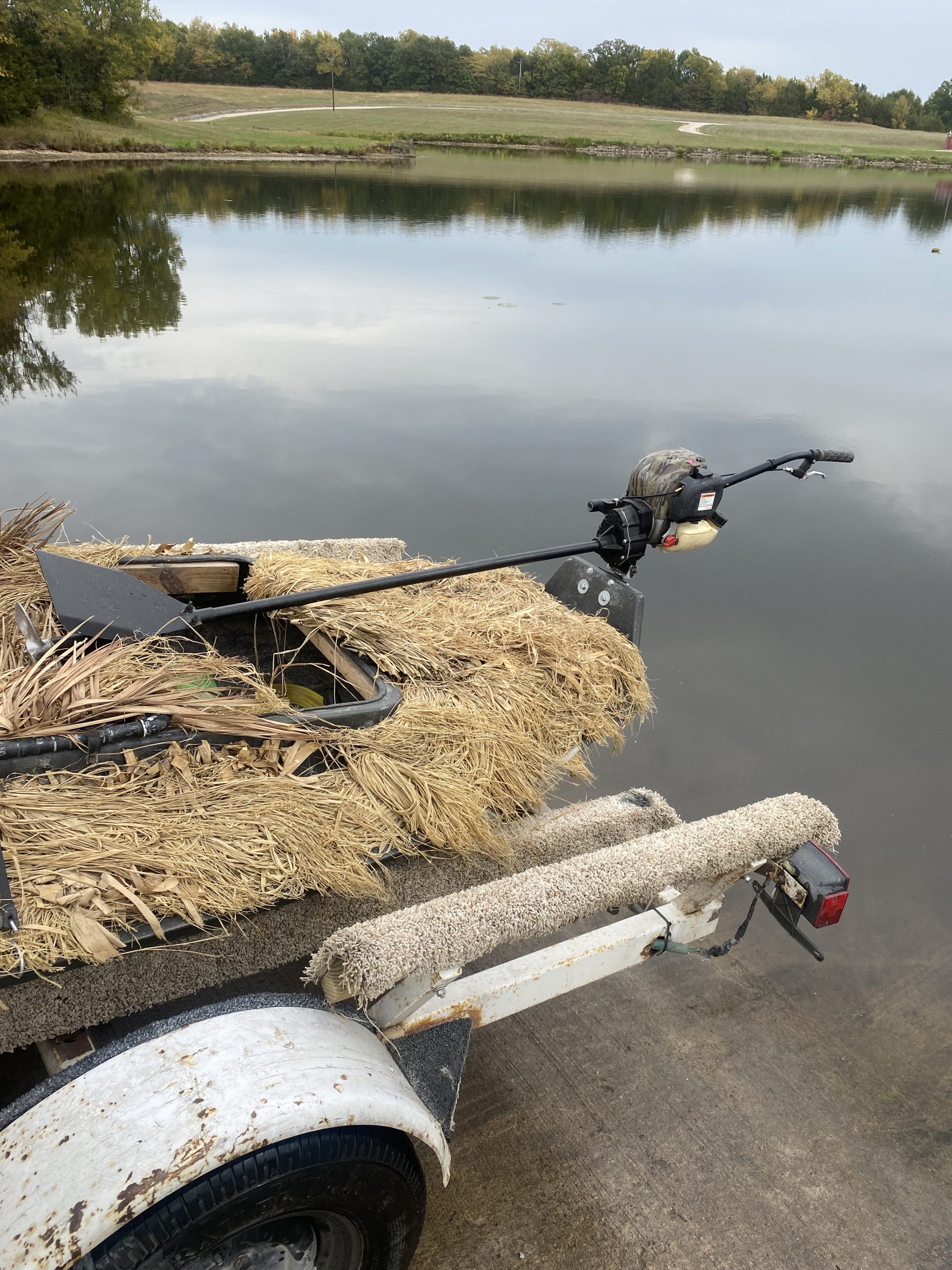
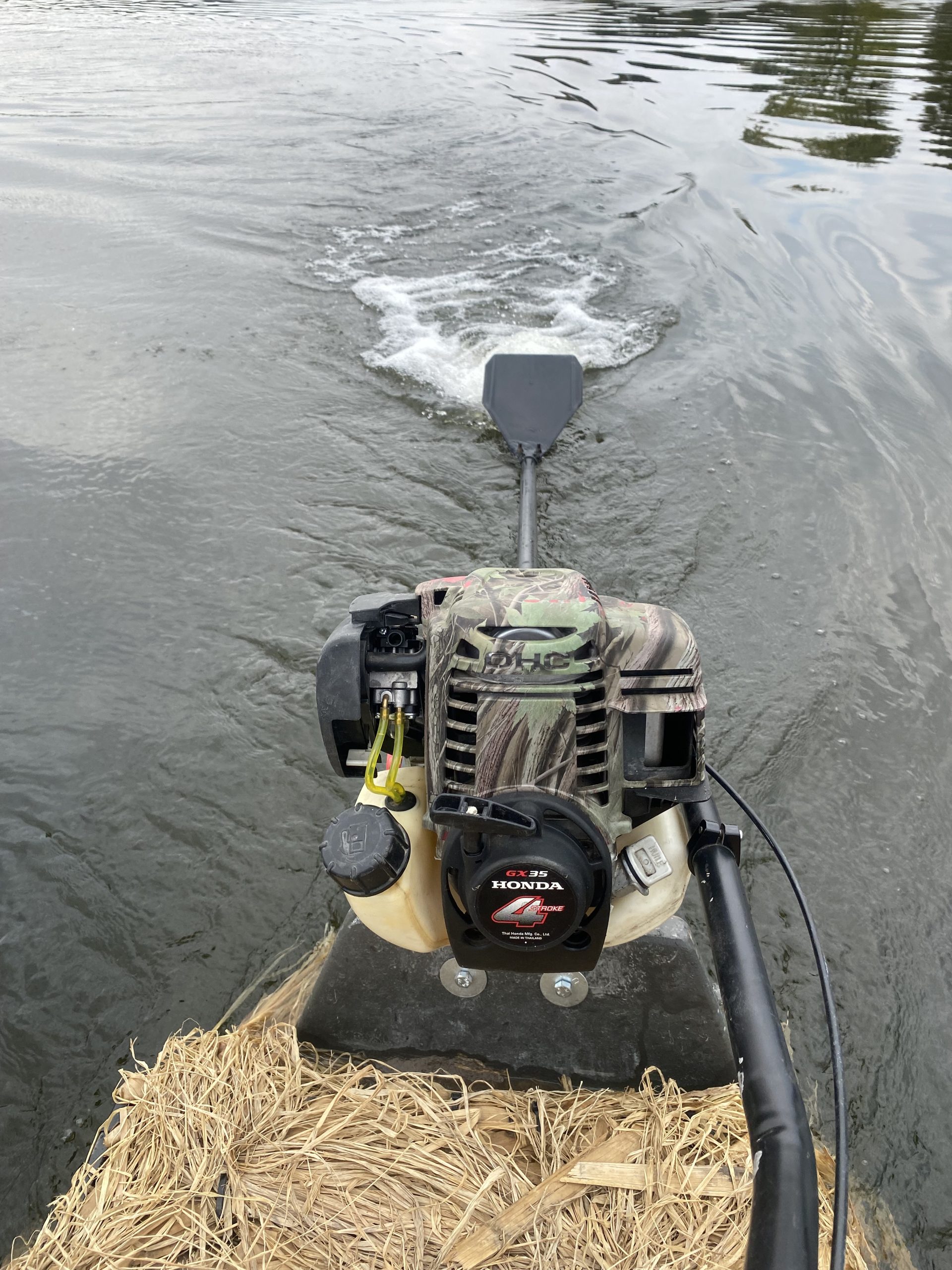
If I have learned one thing about mud motors it is to make sure it fits. Consider your size, height, size of the boat, and load you will carry before making the purchase. Stand up in the boat and see where the handle sits and how well you can control the handle. Is it available in both right-hand and left-hand steering? Give some thought to where this motor will be used. Long distances down rivers, drainage ditches, and across lakes is best suited for surface drives and more powerful long-tail motors. Deep swamps do demand power and if speed is not the issue less power works. Get something too big and it will have limits as to where it can fit.
Mud motors can be a valuable asset to access lakes, marshes, swamps, timber, and just about any surface with a little water. The wide variety of horsepower, weights, and functions shown here will fit any boat of just about any size. Consider your next propulsion unit in one of the two versions and check out these companies for all your mud motor needs.
Finally, a word of caution when running through areas also populated with hunters in marsh chairs, layout boats, or other concealments, safe speeds should be observed. Many hunters sit low in the water and excessive speed could result in hitting an unsuspecting hunter. Just be careful.
